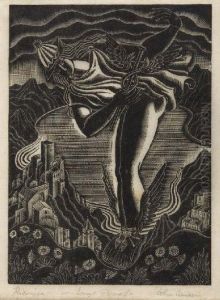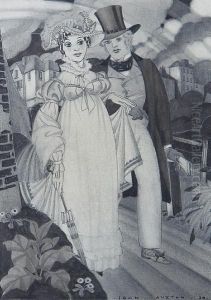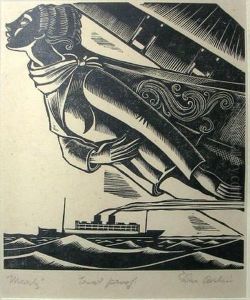John Austen Paintings
John Austen was an English illustrator, born in 1886 in Kent. He is renowned for his distinctive style, which combined elements of the Art Nouveau movement with a bold, modern approach to design and illustration. Austen's early work was influenced by the aesthetics of the Pre-Raphaelite Brotherhood and the Arts and Crafts movement, which can be seen in his attention to detail and his use of bold lines and patterns.
Austen began his career as an illustrator around the time of World War I and gained recognition for his unique interpretations of classic literature. He provided illustrations for works such as 'Hamlet' and 'The Tempest' by William Shakespeare, 'The Decameron' by Giovanni Boccaccio, and 'Pride and Prejudice' by Jane Austen (no relation). His work is characterized by its dramatic flair and often featured stylized figures, elaborate costumes, and detailed settings.
During the 1920s and 1930s, Austen's style evolved further, showing the influence of Art Deco, which was becoming popular at the time. He also produced illustrations for children's books and created designs for magazines and advertisements, showcasing his versatility as an artist. Despite the economic hardships of the era, including the Great Depression, Austen managed to sustain a successful career through his work with various publishers and commercial clients.
John Austen's career was cut short by his premature death in 1948. Despite his relatively brief career, his innovative and imaginative illustrations have left a lasting impression on the world of book design and illustration. His work is still celebrated today for its creativity and unique blend of traditional and modernist artistic elements.


